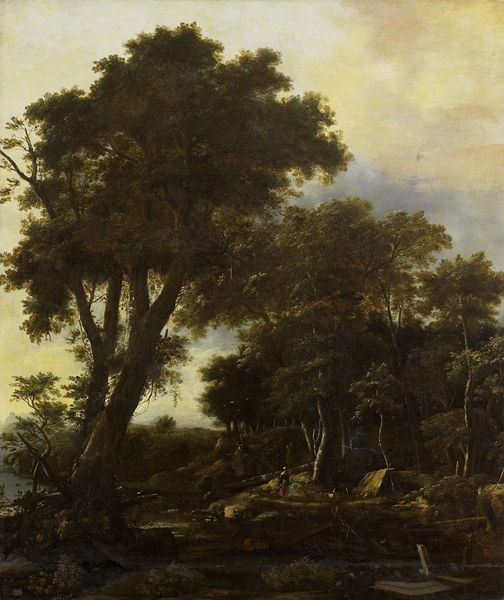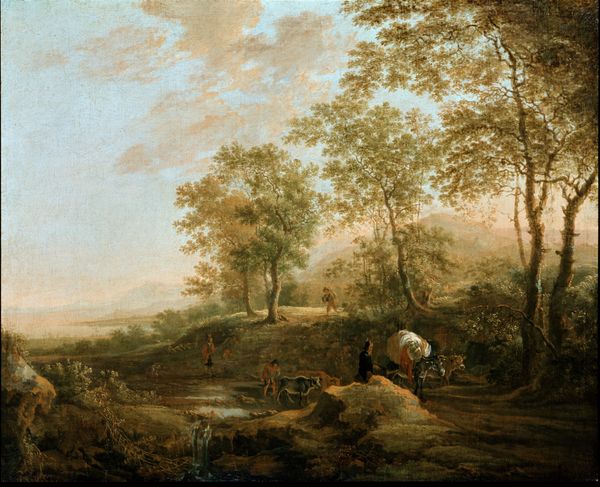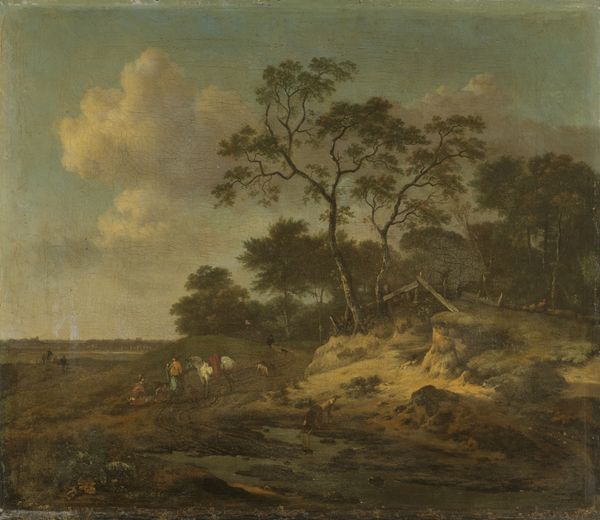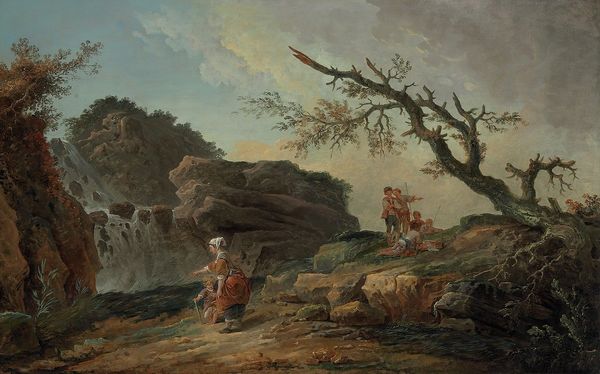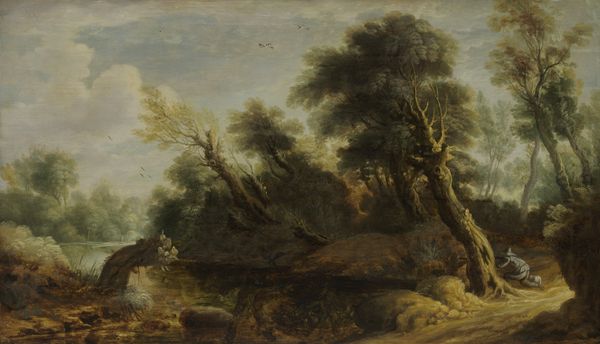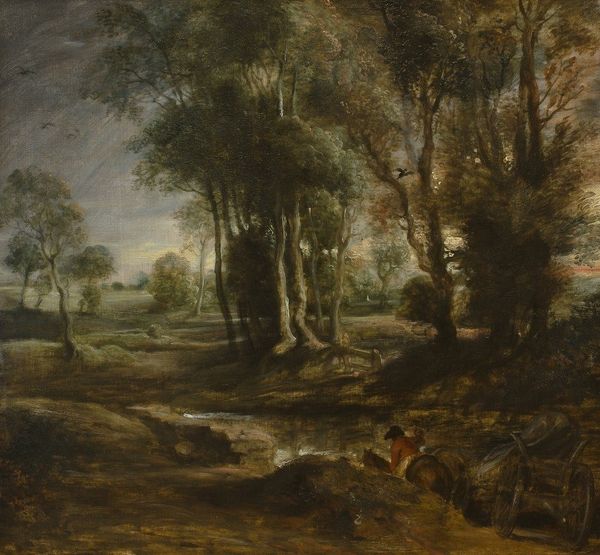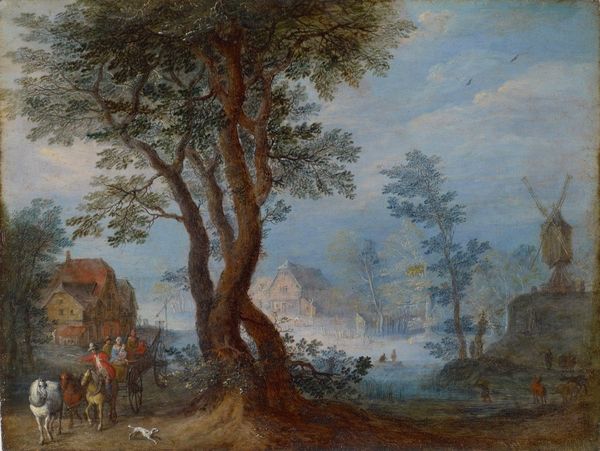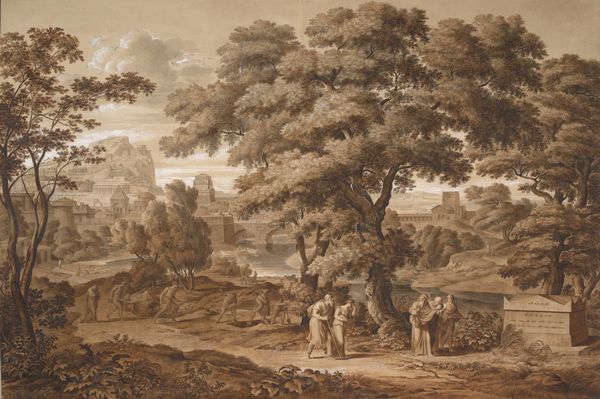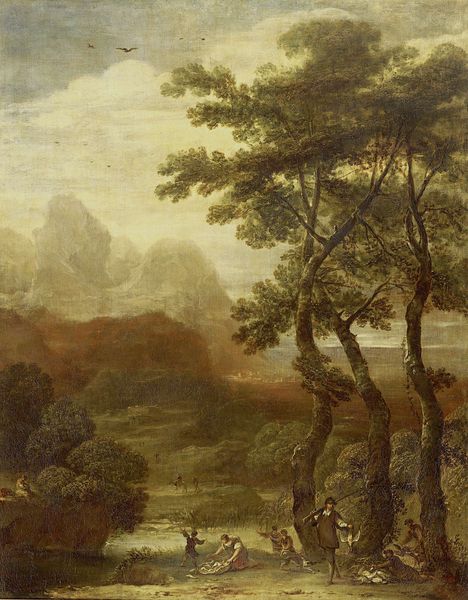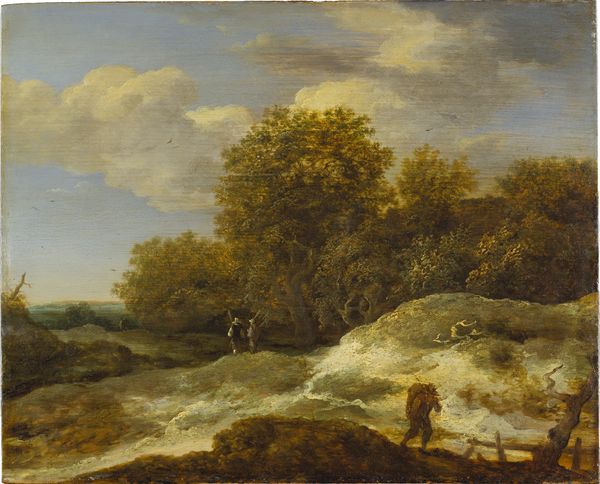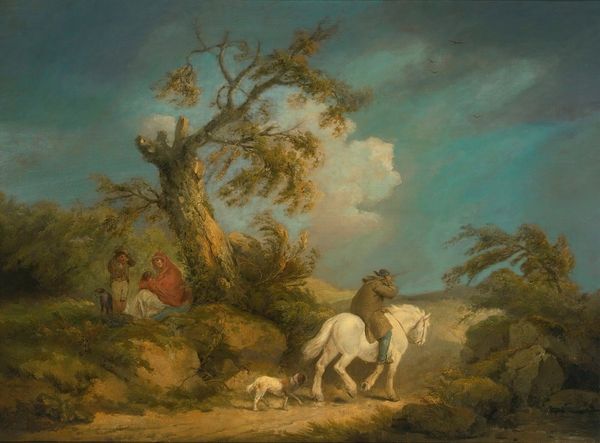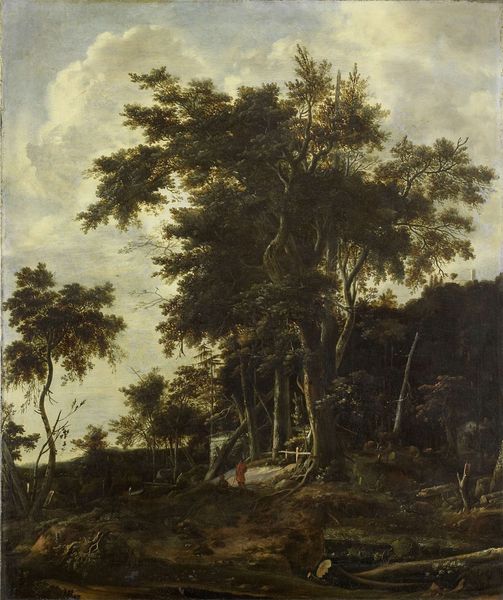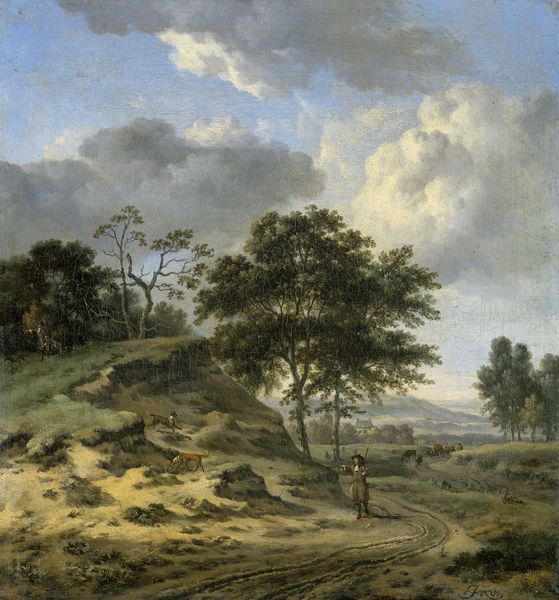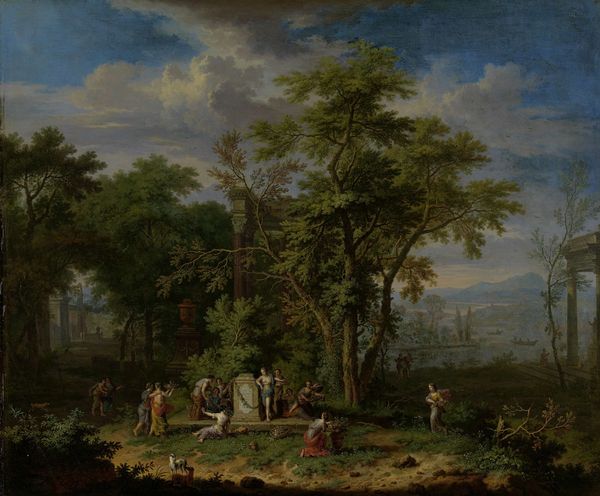
Copyright: Public Domain: Artvee
Editor: We're looking at "The Fallen Tree," an oil painting by Thomas Gainsborough, created between 1750 and 1753. I find its muted colors and the broken tree incredibly melancholic. What do you see in this piece? Curator: I see a visual statement deeply intertwined with the social transformations of 18th-century England. Think about the Enclosure Acts— the privatization of common lands, dramatically altering rural life and access to resources. Does the 'fallen tree' represent a disruption of that established order? How might this resonate with ideas around land ownership, labour and who benefits from this transformation? Editor: I hadn't considered the Enclosure Acts! So, the fallen tree could be a symbol of the changing landscape due to those laws? Curator: Precisely! And notice the figures—the drover with cattle, the farm workers in the background. How do they negotiate with the landscape? Gainsborough is not just painting a pretty picture. He presents the human element as both an active participant within the scene and potentially being overwhelmed by this force. How does the presence of those figures contribute to or perhaps disrupt that Romantic vision of nature? Editor: So, it’s not just about a pretty landscape, but also about the people who lived and worked in it, and their relationship to a changing world? I see how connecting it to the Enclosure Acts opens up new layers of meaning. Curator: Exactly! Gainsborough uses the landscape, and our emotional reaction to it, to prompt us to consider the social and economic shifts happening around him and how these affected the lives of ordinary people. Editor: This has completely changed how I see the painting. Thanks! Curator: My pleasure! I'm glad to have shed light on it for you!
Comments
No comments
Be the first to comment and join the conversation on the ultimate creative platform.
